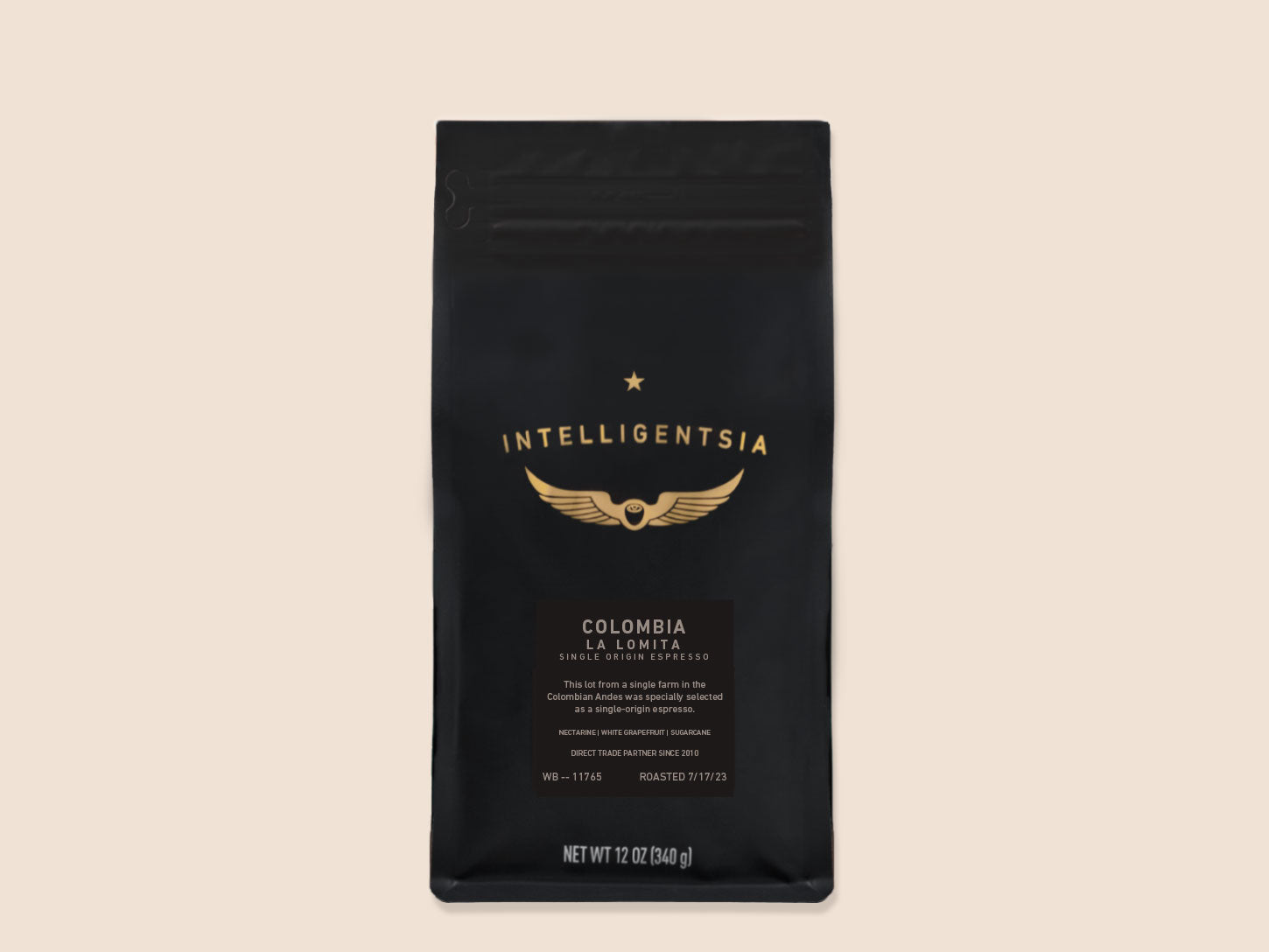SOE Single Origin Espresso – A Thoughtful Gift for Coffee Aficionados
SOE Single Origin Espresso – A Thoughtful Gift for Coffee Aficionados
Blog Article
Understanding Coffee Beans: the Trip From Espresso to Blended Coffee Beans

The Beginnings of Coffee: An International Viewpoint
While you might assume of coffee as a contemporary staple, its beginnings map back centuries, intertwining with cultures throughout the world. The tale begins in Ethiopia, where legend claims a goat herdsman called Kaldi uncovered the stimulating effects of coffee beans after seeing his goats frolicking energetically after eating them.
As trade paths broadened, coffee made its way to Europe in the 17th century, swiftly acquiring appeal. Each culture added its distinct twist to coffee prep work, improving its background.
Cultivation and Harvesting of Coffee Beans
As coffee's trip evolved, the emphasis moved to the cultivation and harvesting of certain bean ranges, especially those utilized for espresso. You'll find that coffee beans commonly originate from Arabica or Robusta plants, each offering unique flavors. The perfect growing conditions include high altitudes and abundant, well-drained soil, which improve the beans' high quality.
Throughout the harvest, selecting methods differ. In some areas, employees hand-pick ripe cherries, making certain only the very best fruit goes to processing. In other locations, mechanical harvesters are utilized, specifically on bigger farms. When the cherries get to peak perfection for optimum taste., timing is essential; you want to gather.
As soon as harvested, the beans are prepared for handling, which is essential in identifying their last preference. Comprehending the cultivation and harvesting processes offers you insight into what goes into your preferred espresso, improving your admiration for each and every cup.
Handling Approaches: From Cherry to Bean
Since you have actually discovered collecting espresso beans, allow's check out just how those cherries change into the coffee beans you enjoy. You'll see just how different harvesting strategies influence flavor, adhered to by the important steps of fermentation and drying. We'll break down the milling and grading procedure that determines your coffee's quality.
Harvesting Methods Discussed
When it comes to coffee, comprehending harvesting strategies is crucial, considering that they directly affect the taste and top quality of the beans you take pleasure in. Selective choosing entails hand-picking just ripe cherries, guaranteeing you obtain the best quality beans. Ultimately, the option of collecting strategy can considerably affect your coffee experience, so it's worth recognizing how those beans made it to your cup.
Fermentation and Drying Out
After collecting, the next action in processing coffee beans play a substantial role in forming their taste. You'll find that fermentation is important, as it helps damage down the mucilage bordering the beans, boosting their taste profile. Depending upon the technique, this procedure can last from a couple of hours to several days, with varying outcomes based on temperature level and humidity.
As soon as fermentation is total, drying out complies with, which is just as vital. You can select from mechanical or sun-drying drying out methods. Sun-drying allows the beans to take in flavors from the setting, while mechanical drying out guarantees constant dampness levels no matter of climate. Appropriate drying is vital to avoid mold and protect the beans' top quality, inevitably affecting your mug of coffee.
Milling and Grading Refine
As fermentation and drying out established the stage for taste development, the milling and grading process assurances that only the finest coffee beans make it to your cup. This phase entails getting rid of the external layers of the coffee cherry, consisting of the parchment and husk. High-quality beans obtain a higher grade, resulting in a richer coffee experience.
Toasting Methods: Opening Taste Potential
When you roast coffee beans, the method you pick can substantially influence the taste profile. Understanding the connection in between time, temperature, and toasting techniques is essential to revealing the potential of your mixture. Let's explore exactly how these elements collaborated to develop the excellent mug.
Toasting Approaches Explained
While you may think that all coffee roasting techniques generate the same outcomes, the truth is that each strategy exposes distinct taste possibilities in the beans. Drum toasting makes use of a turning drum to evenly distribute heat, improving caramelization and producing a well balanced taste. Air roasting, on the various other hand, flows warm air around the beans, promoting a lighter roast with obvious level of acidity.

Effect On Taste Profile
Different toasting techniques not only influence the process however additionally considerably impact the flavor account of the coffee beans. Dark roasts, on the other hand, bring out bold, smoky tastes, sometimes covering up the bean's special characteristics. Understanding these subtleties helps you appreciate the virtuosity behind your mug of coffee, improving your total experience with every sip.
Time and Temperature Level Variables
To launch the full taste capacity of coffee beans, both time and temperature during the roasting procedure play considerable functions. When roasting, you'll discover that higher temperatures can swiftly develop tastes, however if you rush it, you might wind up with burnt notes. Conversely, lower temperature levels enable a more gradual flavor advancement, showcasing the beans' unique qualities.

Timing is simply as crucial; expanding the roast also long can result in a loss of acidity and illumination, while as well short a roast may leave the beans underdeveloped. helpful hints Locating that wonderful place requires method and trial and error. By adjusting these elements, you can reveal the abundant, complicated flavors hidden within each bean, creating a genuinely exceptional coffee experience.
The Art of Mixing: Crafting One-of-a-kind Coffee Profiles

Start by selecting a base coffee that supplies a strong foundation. Then, pick corresponding beans to boost specific taste notes. For example, an intense Ethiopian bean can bring fruitiness, while an abundant Brazilian coffee includes body. Trial and error is crucial-- don't be scared to readjust ratios till you find your perfect profile.
As you blend, keep in mind that each combination narrates. You're not just making coffee; you're creating an experience. Take your time, taste frequently, and appreciate the trip of uncovering your trademark blend - Single Origin Espresso.
Developing Approaches: Just How Preparation Impacts Taste
Blending coffee opens up a domain name of taste possibilities, however exactly how you make that blend can substantially influence your last cup. Different developing techniques remove one-of-a-kind flavors and fragrances, so it's essential to choose sensibly. A French press enables oils and sediments to stay, developing a rich, full-bodied experience. On the other hand, a pour-over highlights the coffee's quality and brightness, ideal for showcasing delicate notes.
Coffee, with its high pressure, produces a concentrated shot that highlights sweet taste and crema. If you prefer a lighter brew, take into consideration a chilly mixture method; it produces a smooth, less acidic taste.
Ultimately, testing is essential. Adjusting variables like water temperature, grind size, and make time can transform your coffee's account. Welcome the art of developing to find the tastes concealed in your coffee blends. The right approach can boost your experience to new elevations.
The Future of Coffee: Sustainability and Development
As the coffee industry advances, sustainability and advancement are ending up being necessary for dealing with ecological challenges and meeting customer demands. You'll discover that more coffee companies are embracing eco-friendly techniques, from sourcing beans fairly to carrying out lasting farming strategies. These shifts not just aid the planet however additionally boost the top quality of the coffee you take pleasure in.
You may see advancements like naturally degradable Read More Here product packaging and water-saving developing approaches that reduce waste. Advanced modern technology, such as blockchain, is also coming to be popular, ensuring openness in the supply chain, which allows you to map your coffee back to its beginnings.
Furthermore, buying regional neighborhoods and supporting farmers with fair trade initiatives promotes an extra lasting coffee ecological community. As you sip your following mug, bear in mind that your options can contribute to a brighter future for coffee. By choosing sustainable brand names, you're not simply taking pleasure in a drink; you're making a favorable influence on the world.
Regularly Asked Questions
What Is the Difference Between Arabica and Robusta Beans?
Arabica beans are smoother, sweeter, and have a higher level of acidity, while robusta beans are stronger, much more bitter, and consist of even more high levels of caffeine. When making your coffee., you'll notice these distinctions in taste and scent.
Exactly How Does Altitude Affect Coffee Bean Taste?
Elevation influences coffee bean flavor substantially. Greater altitudes generate beans with brighter acidity and facility flavors, while lower elevations often yield beans that are much heavier and much less nuanced. You'll observe these distinctions in your Recommended Reading mug!
What Are the Health Conveniences of Drinking Coffee?
Consuming coffee can enhance your power, enhance psychological emphasis, and also enhance physical performance. It's abundant in anti-oxidants, may reduce the risk of certain diseases, and can promote a much healthier metabolic process when consumed in small amounts.
Can Coffee Beans Be Recycled for Developing?
Yes, you can reuse coffee beans for brewing, but the taste may be weak. If you delight in experimenting, try recycling them in various ways, like cool brews or including to smoothie mixes for an added kick.
How Should I Shop Coffee Beans for Quality?
To maintain your coffee beans fresh, store them in an impermeable container in a trendy, dark place. Avoid subjecting them to dampness, warmth, or light, as these elements can quickly deteriorate their taste and scent.
Recognizing Coffee Beans: the Journey From Coffee to Blended Coffee Beans.
Currently that you have actually found out regarding gathering espresso beans, let's explore just how those cherries transform into the coffee beans you like.When you roast coffee beans, the method you choose can drastically impact the flavor profile - Single Origin Espresso.While you could believe that all coffee roasting methods generate the very same outcomes, the truth is that each strategy reveals special flavor potentials in the beans.Various roasting approaches not just influence the process however also considerably affect the flavor profile of the coffee beans
Report this page